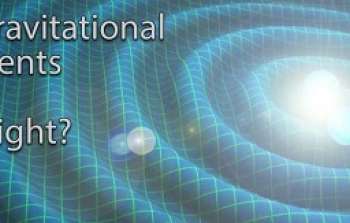sci16053 — Announcement
Could Gravitational Wave Events Produce Optical Light Too?
August 15, 2016
Gemini participated in the search for the visible counterpart to a recent gravitational wave detection, but did not find the intended needle in the very large haystack. The Advanced Laser Interferometer Gravitational-Wave Observatory (LIGO) detected the gravitational wave event on December 26, 2015, and scientists attributed the signature to the merger of two stellar-mass black holes. The Pan_STARRS1 telescope provided the wide-field optical search for a counterpart, covering about 290 square degrees. Stephen Smartt (Queens University Belfast, UK), Ken Chambers (University of Hawai‘i), and collaborators then used the Gemini Multi-Object Spectrograph (GMOS) on the Gemini North telescope to obtain spectra of transient sources, and they identified one as a supernova temporally coincident (within about three days) with the gravitational wave event. However, this supernova is not the gravitational wave progenitor, being too distant. A Gemini web feature summarizes the work, and the full results will be published in The Astrophysical Journal Letters. A preprint is available here.
About the Announcement
| Id: |
ID
sci16053
|
